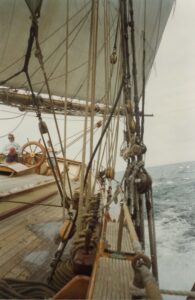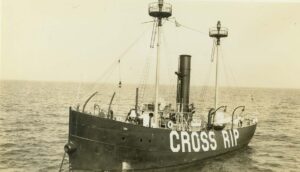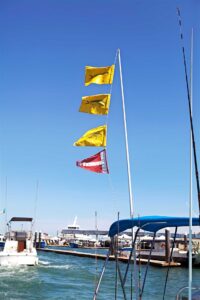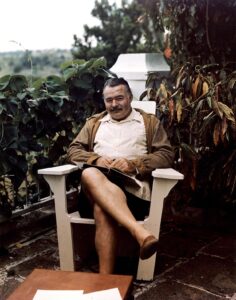“We are at the mouth of the well of the people of Itza,” proclaimed the Maya tour guide 35 years ago on my first visit to Chichén Itzá. Since that time, Chichén Itzá has been named as a UNESCO World Heritage site, been placed on the new seven Wonders of the World list and is the second most-visited archaeological site in Mexico. If you are cruising the Gulf of Mexico and the Western Caribbean, a tour of Chichén Itzá on the Yucatan Peninsula must be added to your bucket list.
Topographically, the Yucatan Peninsula is a very flat landscape of low-lying jungle growing above a limestone shelf, known as the Yucatan Platform to geologists. Limestone is a soft rock that dissolves easily, and over the eons water has eroded the peninsula and dotted it with sinkholes. The sinkhole can expose the groundwater underneath, and if it does, it creates a natural well that the Maya called a cenote.
At its peak, about 700 A.D., the Mayan Empire controlled what is today southeastern Mexico, Guatemala, Belize and the western portions of Honduras and El Salvador. This was the Classic Period when the Maya developed city-states with temples, ball courts, elaborate sculptures and causeways for their trade networks. The same era was also the zenith of the development of Mayan astronomy, hieroglyphics and calendar. When the Classic Period ended in 900 A.D. due to warfare between the city-states, it caused the collapse of much of the Mayan Empire, with the exception of the Yucatan Peninsula.
The Itza people migrated north from Guatemala as the upheavals increased before this collapse and established Chichén Itzá at a site with a history of Mayan religious significance. Chichén Itzá has two cenotes. The smaller of the two, Cenote Xtoloc was used as a reservoir for the city that was soon to become the major center of the region. The second and larger sinkhole, Cenote Sagrado or Sacred Well, was used for religious rituals. Sagrado is 200 feet across with steep rock walls that drop 90 feet to the surface of the water below. And living at the very bottom of the cenote, the Maya believed, was their rain god, Chac.
Since Chac had the ability to control droughts, he was a powerful deity. Ancient Maya made pilgrimages to Cenote Sagrado and offered objects made of jade, gold, obsidian and shell to please Chac. On occasion, young women, children and men were sacrificed to Chac to assure good rains, harvests, health and fortune.
The Itza soon built stone monuments to consolidate the religious, political and social stature of their city. The most well known of these is the Kulkulkan Pyramid, a stepped pyramid about 100 feet high, which is aligned to the position of the shadow of the sun on the first day of spring and the first day of fall. On those days, as the sun’s shadow moved along the pyramid’s balustrade it gave the appearance of a serpent wriggling down the steps.
A short distance from the pyramid is the Great Ball Court with a playing field of 550 feet by 220 feet. The Great Ball Court’s athletes played in an area more than twice the size of an American football field. Ball games were an important part of the social fabric in the Mayan world. Part judge and jury, part religious center, the ball courts were strategically placed in the ceremonial centers of ancient Mayan cities. The most popular game was called Pitz, and because of the large stone rings at Chichén Itzá, it was likely the game of choice for Chichén residents. The object of the game was to propel a heavy solid rubber ball through the stone hoop without the use of their hands.
“The games were serious affairs and were used to settle political and social disputes. A disagreement between two parties or towns could be settled by the recruitment of teams that would play for the parties. Losing a game would often mean decapitation. In many archaeological sites, a skull rack is used to display the heads of the victims.”
Chichén Itzá also has numerous temples and large stone platforms decorated with detailed carvings. And a building thought to be an astronomical observatory is also part of the ruins. The tides of history chronicle the rise and fall of civilizations, and by 1250, archaeologists surmise that Chichén Itzá was losing its influence and was on the decline.
When the Spanish conquistadors arrived in Chichén Itzá about 1530, they found a densely populated area. Eventually, Spain overcame the resistance of the Maya who defended the region and made Chichén Itzá the Spanish capital of the Yucatan, giving it the name Ciudad Real. But by 1588, Chichén Itzá and the surrounding area were turned into a working cattle ranch.
Although Chichén Itzá is 125 miles inland from the nearest marina in Cancún, it is worth spending a day visiting this unique archeological site with one of the many guided excursions available. Cancún offers a number of options to dock your boat while you put on your pith helmet to go exploring inland. The best choice is La Amada Resort, which has two locations in Cancún. Their Marina V&V can accommodate large yachts up to 200 feet and has an adjacent shipyard. Smaller yachts, up to 75 feet, will find excellent dockage at their Marina Novo Cancún. Another option is Marina El Cid Cancun that offers a wide and deep channel with a world-class oceanfront resort hotel and spa, accommodating vessels up to 120 feet.
A trip to Chichén Itzá will pique your curiosity about this ancient civilization and will lead you to explore many other Mayan archaeological ruins on the Yucatan Peninsula.
Capt. Jeff Werner has been in the yachting industry for over 25 years. In addition to working as a captain on private and charter yachts, both sail and power, he is a certified instructor for the USCG, US Sailing, RYA and the MCA. He is also the Diesel Doctor, helping to keep your yacht’s fuel in optimal condition for peak performance. For more information, call 239-246-6810, or visit MyDieselDoctor.com. All Marinalife members receive a 10% discount on purchases of equipment, products and supplies from Diesel Doctor.





